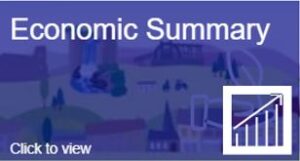 |
 |
 |
|---|
Gross Value Added (GVA)
Gross Value Added (GVA) represents the value of goods and services produced in an area, industry or sector of an economy. ONS GVA is one of the most important indicators of regional economic performance and it is regularly used to demonstrate the economic activity of commercial and non-commercial organisations.
GVA is a measure of how much a sub-national or local economy produces over a given time period.
Key Messages:
- County Durham has historically suffered from a lower wage economy compared to national averages,
- Productivity in the county continues to rise at a similar rate to regional and national productivity growth, while still being constrained by the relatively large number of persons of working age in the county on state benefits and low earnings (compared nationally),
- The total value of County Durham’s economy (2022) was £10.7bn and contributed 16.9% of the North East total (£63.1bn).
- The total value of the County Durham economy increase by 16.5% (from £9.1bn to £10.7bn) between 2020 and 2022,
- GVA per Head of Population in County Durham also increase by 14.5%, rising to £20,173, and was 85.8% of the regional average and 59.4% of the England average,
- GVA per Hour Worked in the county was £33.50 in 2022 and was 16.9% lower than the national average of £40.30,
- GVA per Filled Job in the county was £51,361 in 2022, and was 18.2% lower than the national average of £62,751.
Note: Post Brexit the UK adopted new area definitions for sub-national areas. These new areas, called UK International Territorial Levels (ITLs) have replaced the former Nomenclature of Territorial Units for Statistics (NUTS) definitions. However in the North East the boundaries have remained the same.
The following dashboard summarises the latest release of this data.
Why is it important?
Groups most at risk
The government’s strategy for the health of the national economy relies on reducing the national deficit by a combination of economic growth and reduced government spending. However, the scale and speed of reductions in public sector expenditure has hit recovering economies and the most deprived areas hard. County Durham’s local economy is mixed, with private and public spending closely related. Whilst County Durham has many economic assets, not least its people and places; more stringent criteria for bank lending and unprecedented cuts in public spending are making economic growth more challenging.
This affects all residents in County Durham.
